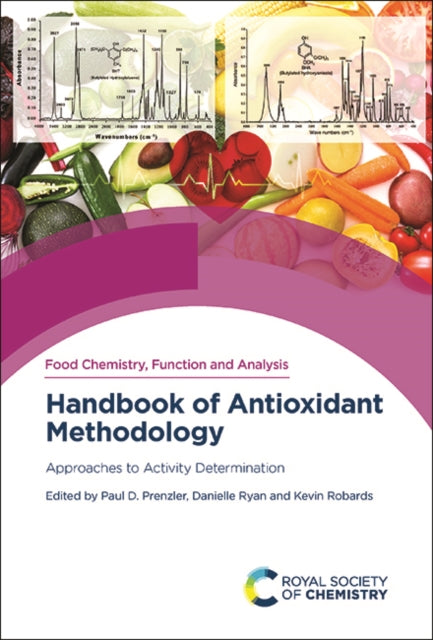Shulph Ink
Handbook of Antioxidant Methodology: Approaches to Activity Determination
Handbook of Antioxidant Methodology: Approaches to Activity Determination
YOU SAVE £8.59
- Condition: Brand new
- UK Delivery times: Usually arrives within 2 - 3 working days
- UK Shipping: Fee starts at £2.39. Subject to product weight & dimension
Bulk ordering. Want 15 or more copies? Get a personalised quote and bigger discounts. Learn more about bulk orders.
Couldn't load pickup availability
- More about Handbook of Antioxidant Methodology: Approaches to Activity Determination
Antioxidant research has grown rapidly in the last 30 years, but measuring antioxidant activity is controversial. This book discusses the importance of context, methods, interpretation, and data in understanding antioxidant activity. It presents background information on redox processes, thermodynamics, and kinetics, as well as recovery and extraction of antioxidants from diverse matrices. Emerging techniques such as electrochemical methods, chip technology, metabolomics, and gene and protein expression are examined. The book is written to appeal to a wide audience, particularly researchers attempting to make sense of the vast literature and conflicting messages on antioxidant activity.
Format: Hardback
Length: 516 pages
Publication date: 06 December 2021
Publisher: Royal Society of Chemistry
The field of antioxidant research has experienced a remarkable surge in the past three decades, exhibiting no indications of slowing down. To gain a comprehensive understanding of how antioxidants function, it is crucial to delve into the measurement of their activity. However, the assessment of antioxidant activity poses significant controversies, with questions raised about its validity and reliability. This book aims to address these controversies by providing insights into various aspects of antioxidant testing methods.
One of the key themes emphasized in the book is the significance of context. It guides the reader in making informed decisions about the most appropriate methods for different scenarios, interprets the obtained results, and draws meaningful conclusions from the data. The book recognizes the multiplicity of methods available for measuring antioxidant activity, with no standardized method approved for in vitro or in vivo testing. To select an appropriate method, a thorough knowledge of the underlying reduction-oxidation processes, thermodynamics, and kinetics is essential. This knowledge empowers readers to better understand and utilize activity measurements and the associated data.
The book offers a unique approach to presenting background information, tailored to assist readers in grasping the fundamentals of redox processes, thermodynamics, and kinetics. This foundation is crucial for later chapters that delve into more specialized topics. The recovery and extraction of antioxidants from diverse matrices are presented in a clear and logical manner, accompanied by methods used to determine antioxidant activity from a mechanistic perspective. Other chapters explore current methodologies employed for activity testing in various sample types, ranging from foods and plants to body fluids and even packaging. Throughout, a strong emphasis is placed on the nature of the sample and the underlying chemistry of the method employed.
In addition to traditional methods, the book also explores emerging techniques for assessing antioxidant behavior. Electrochemical methods and chip technology, for instance, are highlighted as promising tools for antioxidant analysis. These techniques offer rapid, sensitive, and specific detection of antioxidants, providing valuable insights into the behavior and properties of these important compounds.
By addressing the controversies surrounding antioxidant activity measurements, this book aims to enhance the understanding and utilization of these compounds in various fields, including nutrition, medicine, and agriculture. It serves as a valuable resource for researchers, scientists, and practitioners seeking to navigate the complexities of antioxidant testing and interpretation.
Weight: 946g
Dimension: 234 x 156 (mm)
ISBN-13: 9781839161551
This item can be found in:
UK and International shipping information
UK and International shipping information
UK Delivery and returns information:
- Delivery within 2 - 3 days when ordering in the UK.
- Shipping fee for UK customers from £2.39. Fully tracked shipping service available.
- Returns policy: Return within 30 days of receipt for full refund.
International deliveries:
Shulph Ink now ships to Australia, Belgium, Canada, France, Germany, Ireland, Italy, India, Luxembourg Saudi Arabia, Singapore, Spain, Netherlands, New Zealand, United Arab Emirates, United States of America.
- Delivery times: within 5 - 10 days for international orders.
- Shipping fee: charges vary for overseas orders. Only tracked services are available for most international orders. Some countries have untracked shipping options.
- Customs charges: If ordering to addresses outside the United Kingdom, you may or may not incur additional customs and duties fees during local delivery.


